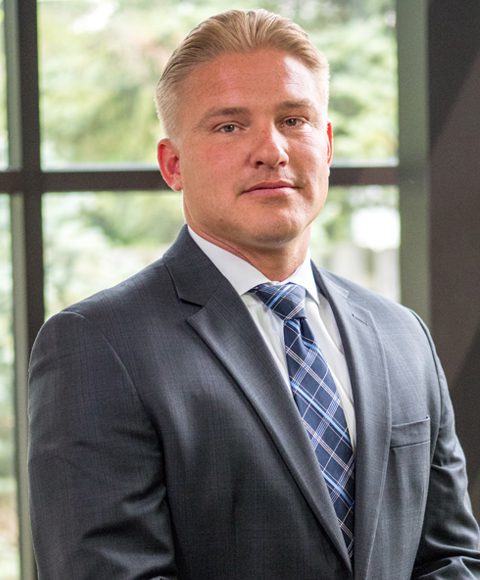LOS ANGELES, CA (WIRED) — As hundreds of United States Marines deploy in Los Angeles under presidential orders to protect federal property amid growing protests over immigration enforcement, constitutional scholars and civil rights attorneys warn of long-term implications for American democracy and civil-military relations.
President Donald Trump revealed Monday that he had ordered the deployment of more than 700 activity-duty Marines out of Camp Pendleton—an extraordinary use of military force in response to civil unrest. The move, widely condemned by his critics, follows Trump’s federalization of the National Guard. Some 3,800 guardsmen have since been deployed in California against the objections of its government, spurring debate among legal observers over the limits of the president’s power to send troops into American streets.
Trump ordered the deployments in response to thousands of Angelenos who took to the streets on Friday in protests. LA residents responded after Immigration and Customs Enforcement (ICE) agents carried out sweeping raids of local businesses, arresting, among others, dozens of day laborers who were vying for work outside a local Home Depot. Larger demonstrations soon formed and remained largely peaceful until residents were engaged by police with riot shields and crowd control weapons. Over the weekend, the clashes between police and protesters escalated across many neighborhoods with large immigrant populations. Numerous buildings were vandalized with anti-ICE messages, and several Waymo autonomous vehicles were set ablaze.
Videos captured by protest attendees show police firing upon demonstrators with rubber bullets and other crowd control agents, including waves of asphyxiating CS gas. Members of the press shared images online showing injuries they incurred from the police assault. In widely shared footage, a law enforcement officer appears to intentionally target an Australian reporter, Lauren Tomasi, shooting her from feet away with a rubber bullet as she delivers a monologue into a camera. On Monday, CNN correspondent Jason Carroll was arrested live on air.
California governor Gavin Newsom condemned Trump’s troop deployment in posts on social media, calling the president’s actions an “unmistakable step toward authoritarianism.” His attorney general, Rob Bonta, has filed a lawsuit in federal court claiming the order violated the state’s sovereignty, infringing on Newsom’s authority as the California National Guard’s commander in chief.
In response to a request for comment, the Department of Defense referred WIRED to a US Northern Command press release detailing the deployment of Marines and National Guardsmen.
Federal troops in the United States are ordinarily barred from participating in civilian law enforcement activities. This rule, known as “posse comitatus,” may be suspended, however, by a sitting president in cases of civil unrest or outright rebellion. This exception—permitted under the Insurrection Act—allows the president to deploy troops when circumstances make it “impracticable” for state authorities to enforce federal law by “ordinary” means.
While these powers are most often invoked at the request of a state government, the president may also invoke the act when a state chooses to ignore the constitutional rights of its inhabitants—as happened multiple times in the mid-20th century, when southern states refused to desegregate schools after the Supreme Court’s landmark Brown v. Board of Education decision.
President Trump, however, has so far not invoked the Insurrection Act, relying instead on a theory of “inherent authority” advanced by the US Justice Department in 1971 during the height of the anti–Vietnam War protests. This interpretation of presidential power finds that troops may be deployed in an effort to “protect federal property and functions.” Notably—unlike the Insurrection Act—this does not permit troops to engage in activities that are generally the purview of civilian law enforcement agencies.
Trump also invoked statutory power granted to him by Congress under Title 10 of the US Code, which enabled him to federalize elements of California’s National Guard. These activations typically occur when guardsmen are needed to support overseas military operations, as happened routinely this century during the wars in Iraq and Afghanistan. Domestically, however, guardsmen are not usually federalized without the agreement of a state’s governor—unless the Insurrection Act has been invoked.
Legal experts interviewed by WIRED offered a range of opinions on the president’s authority to deploy active-duty military troops or federalize the National Guard. While most believe it is likely within Trump’s power to ignore Newsom’s express objections, doing so without an invocation of the Insurrection Act, they say, is a decision fraught with legal complexities that carries serious implications, from altering—perhaps permanently—the fundamental relationship between Americans, states, and the federal government, to disturbing the delicate balance between civilian governance and military power.
Liza Goitein, senior director of the Brennan Center’s Liberty and National Security Program, underscores the “unprecedented” nature of Trump’s approach. “He’s trying to basically exercise the powers of the Insurrection Act without invoking it,” she says. A key issue for Goitein is that the memorandum signed by Trump last week federalizing the National Guard makes no mention of Los Angeles or California. Rather, it states that the guardsmen are being mobilized to address protests that are both “occurring” and “likely to occur.”
In essence, the memo “authorizes the deployment of federal troops anywhere in the country,” Goitein says, “including places where there are no protests yet. We’re talking about preemptive deployment.”
Goitein argues that the administration’s justifications could undermine both judicial accountability and civil‑military boundaries. Under the Insurrection Act, federal troops can take on the responsibilities of local and state police. But without it, their authority should be quite limited. Neither the guardsmen nor the Marines, for instance, should engage with protesters acting peacefully, according to Goitein. “He says they’re there to protect federal property,” she says. “But it looks a lot like quelling civil unrest.”
Anthony Kuhn, a 28-year US Army veteran and managing partner at Tully Rinckey, believes, meanwhile, that there is really “no question” that Trump would be justified in declaring a “violent rebellion” underway in California, empowering him to ignore Newsom’s objections. The images and video of protesters hurling rocks and other items at police and lighting cars on fire all serve as evidence toward that conclusion.
“I know people in California, the governor, the mayor, are trying to frame it as a protest. But at this point,” says Kuhn, “it’s a violent rebellion. You can draw your own conclusions from the pictures and videos floating around.” Kuhn argues that the intentions of the protesters, the politics fueling the demonstrations, don’t matter. “They’re attacking federal facilities. They’re destroying federal property. So in an attempt to restore the peace, the president has the authority under Title 10 to deploy troops. It’s pretty straightforward.”





